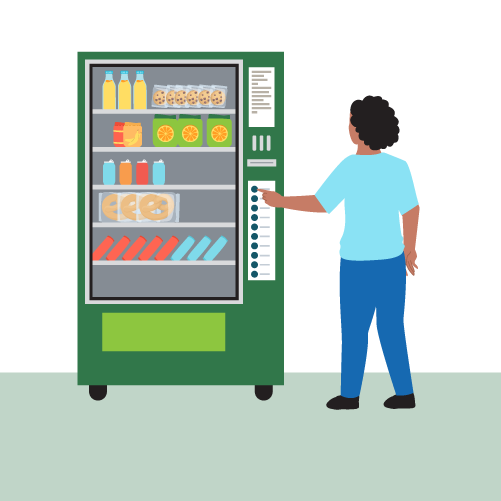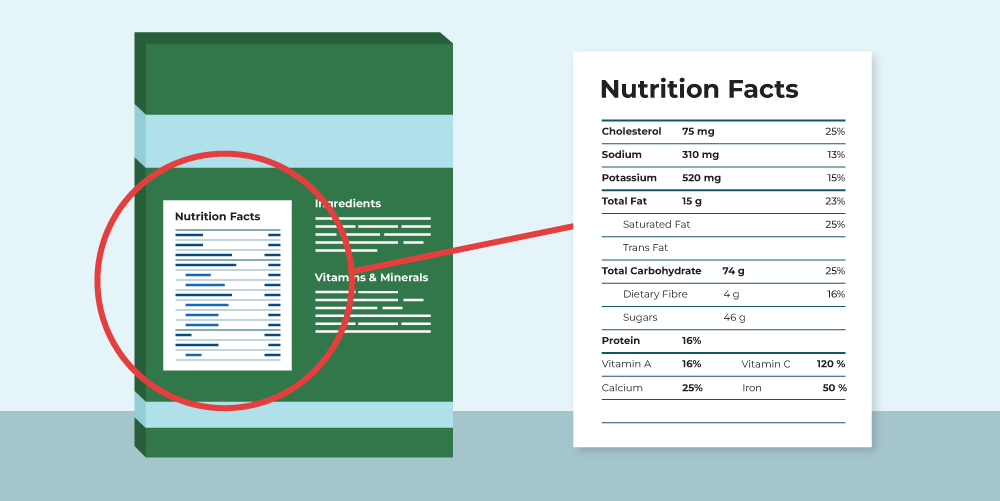Healthy eating policies
 Food composition
Food composition
- Food composition, as a policy action, refers to government systems that encourage processed foods and out-of-home meals to be nutrient-rich and of a healthy composition (e.g. limited sodium, saturated fat, trans fat, added sugar).
- Reformulation of food by beverage manufacturers, such as using less sugar in products, decreases sugar-sweetened beverage intake.
- Reformulation of foods containing trans-fatty acids decreases unhealthy eating and reduces trans-fatty acid consumption.
Provincial/territorial healthy eating policy analysis
The degree of policy adoption is LOW – no provincial/territorial policies target food composition at the manufacturer or retail level. This is expected as food composition regulations generally fall under federal jurisdiction.
Examples of policies include the following:
- All provinces/territories are governed by the federal government’s Food and Drug Act, which bans the addition of certain foods, including partially hydrogenated oils which are a source of trans fats.
- Nine provincial/territorial policies regulate food composition in schools and limit the sales of food high in sodium, sugar and fat, including trans-fat (NL, NS, NB, PE, SK, MB, BC, YT, ON).
- British Columbia’s Healthier Choices in Vending Machines policy regulates vending machine sales to include foods that are low in sodium, sugar and fat in provincially operated buildings.

Vending machines in provincially operated buildings in BC must include foods low in sodium, sugar and fat
Municipal healthy eating policy analysis
The degree of policy adoption is LOW – only one municipal policy targets food composition. This is expected as food composition regulations generally fall under federal jurisdiction.
- Montreal’s Côte-des-Neiges – Notre-Dame-de-Grâce neighbourhood has implemented a Policy on Healthy Lifestyle which imposes a ban on selling food containing trans fats in municipal buildings – including food in vending machines and snack counters.
![]() Opportunities for action: Food composition
Opportunities for action: Food composition
Opportunities for policy action include:
Policies that restrict foods that are high in sodium or sugar in community settings.
 Food labelling
Food labelling
- Food labelling, as a policy action, refers to government regulatory systems that direct labelling on food packaging and menu boards to prevent misleading claims and to enable consumers to make informed food choices.
- Food labels help consumers make healthier eating choices.
- Front-of-package labelling, including a traffic-light system, nutrient warnings, and symbol coding, improves healthy eating and healthier food selection, along with decreases calories, fat, trans-fatty acids, and unhealthy food consumption.
- Nutrition labels in restaurant and food service settings decrease caloric intake, especially labels which provide contextual information.

Warning labels on sugary drinks reduces sales
- Warning labels on sugar sweetened beverages reduces sales and consumption of these products.
- There is a need for primary studies to collect and report data on how to improve accessibility of food labels for all population groups, particularly those living with physical disabilities.
Provincial/territorial healthy eating policy analysis
The degree of policy adoption is LOW – despite several provincial/territorial policies governing food labeling as it relates to food safety and manufacturing practices, only Ontario has adopted food labeling policies for healthy eating requiring restaurants with multiple locations to list caloric information on menus for adults and children.
- All provinces and territories are required to follow the pre-packaged food nutrition facts table requirements set by the federal government, including:
- Serving/portion sizes
- Caloric information
- % Daily values for sugars, fats, and vitamins/minerals
Municipal healthy eating policy analysis
- The degree of policy adoption is LOW – no municipalities were found to have policies regulating food labeling and healthy eating.
![]() Opportunities for action: Food labelling
Opportunities for action: Food labelling
Policies could be implemented to increase knowledge and inform healthy food choices.
The following policy directions should be considered:
- Mandate labels to disclose the amount of added sugar or fat.
- Identify healthy menu options, based on fat, sugar, and sodium content.
- Support federal regulations requiring front-of-package labelling systems.
